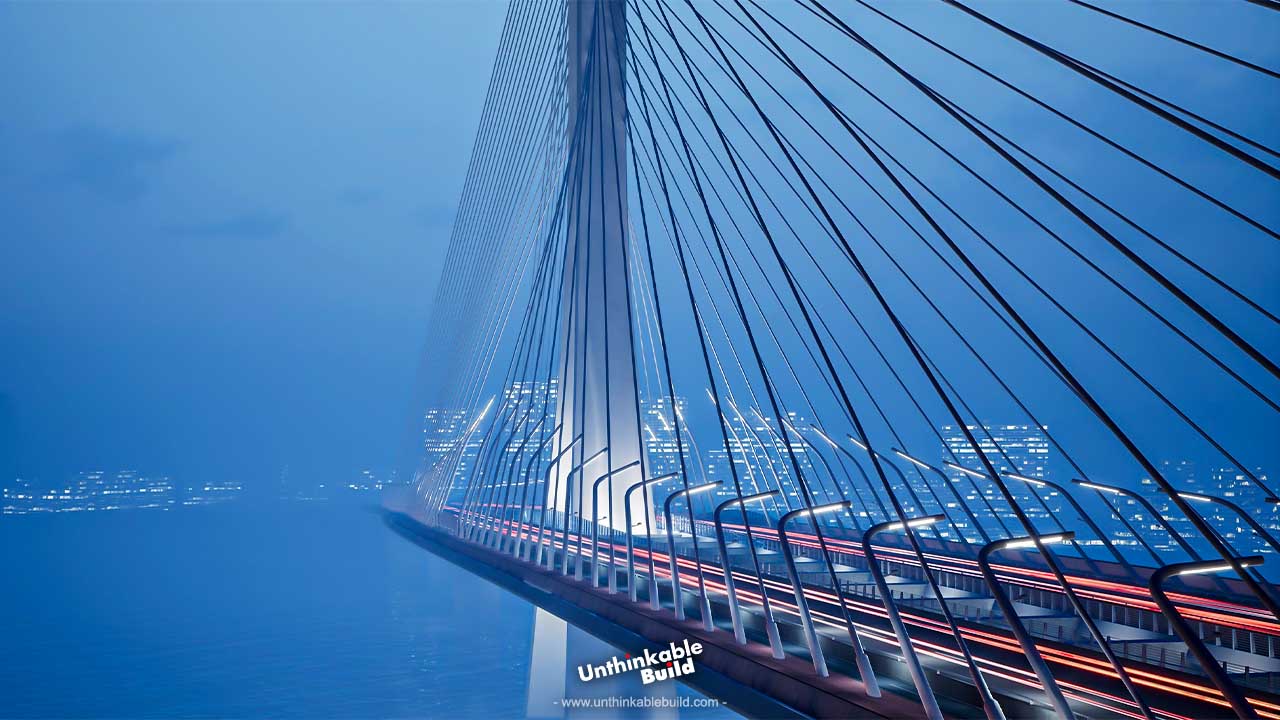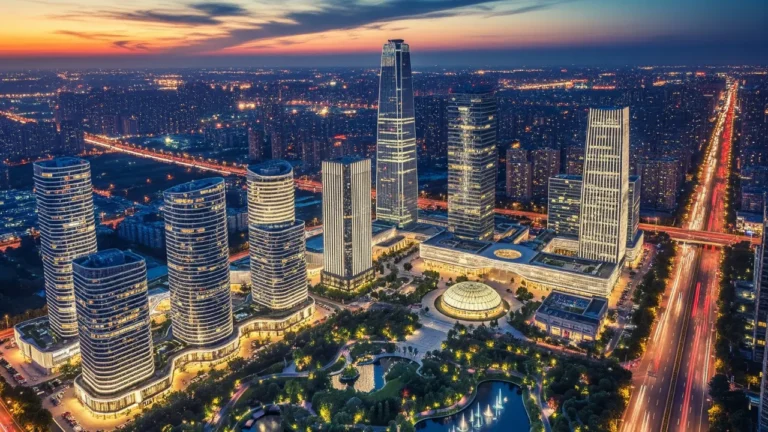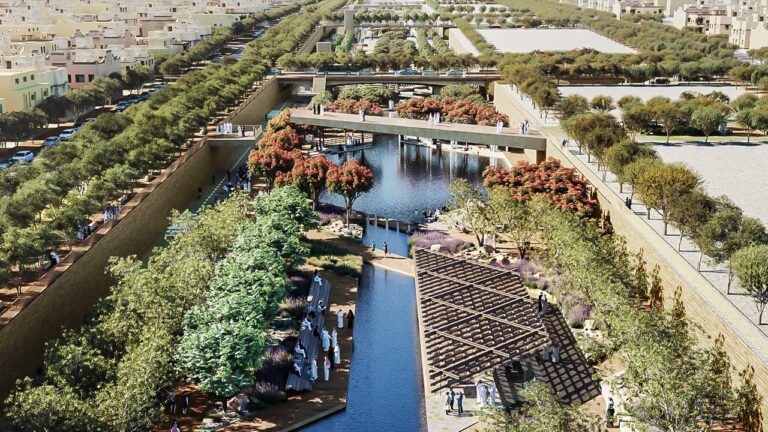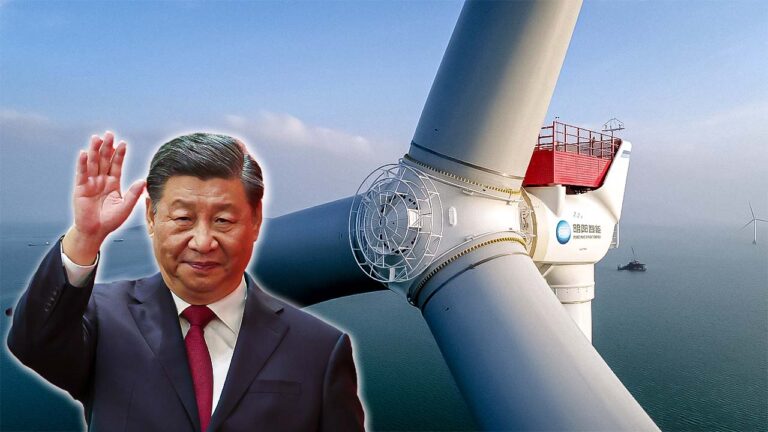Inside Taiwan’s Longest Cable Stayed Bridge in the World
Like other major cities around the world, Taipei, the capital of Taiwan, is facing significant traffic challenges. Imagine being able to cut your commute time by 25 minutes, and that’s exactly what a new engineering marvel in Taipei aims to achieve. Cable-stayed Danjiang bridge crafted from steel, stretching 920 meters and supported by a single tower over the famous Tamsui River, is currently under construction at a staggering cost of $405.2 million. Once completed, this bridge not only make the journey between the Tamsui and Bali districts much quicker, but the heavy traffic pressure on the Kuandu Bridge will also be significantly reduced.
World-renowned Zaha Hadid Architects, in collaboration with Sinotech Engineering Consultants and German engineers Leonhardt Andra und Partner Beratende Ingenieure, have won an international competition to design the Danjiang Bridge. This ambitious project aims to set new world records in bridge construction. What cutting-edge design principles and advanced technologies are being used to bring this visionary structure to life? From innovative cable-stayed techniques to state-of-the-art materials, the Danjiang Bridge promises to be a landmark of modern engineering and design.
Taiwan’s capital Taipei, like many bustling cities, struggles with traffic congestion that affects both locals and visitors. Imagine navigating the city’s lively streets only to find yourself stuck in traffic for what feels like ages. According to the TomTom Traffic analysis report, Taipei ranks 17th for its worst traffic conditions. While not the absolute worst, it is still a significant challenge that impacts everyone’s daily routines.
Also Read: The Urgent Restoration Efforts to Save the Eiffel Tower
Traffic between New Taipei City and Taipei City can be a real headache, especially during rush hours. While Taipei’s traffic is not the worst out there, several factors make getting around challenging. The city’s infrastructure and planning sometimes prioritize cars over pedestrians, making it tough for people on foot to navigate side streets safely.
The existing Guandu Bridge, stretching across the Tamsui River, connects Bali and Tamsui districts in New Taipei City with Beitou in Taipei City. Rush hour is when things get really tricky. Commuters from New Taipei City flood into Taipei, causing traffic jams. The metro system gets packed too, adding to the stress of getting around during these hours.
Due heavy traffic and tricky conditions at Guandu Bridge, the authorities installed double main pillar guardrails at the entrance and exit ramps in May 2021 to prevent accidents and congestion caused by illegal lane changes.
The new under construction Danjiang Bridge, stretching over Taipei’s Tamsui River, is a vital part of northern Taiwan’s infrastructure upgrade. By connecting the West Coast Expressway and Bali-Xindian Expressway with Highways 2 and 15, it will improve connections between neighborhoods and eases traffic in local town centers. This will only help ease congestion on the upstream Guandu Bridge located 5 kilometer upriver, but also enhance travel along the northern coast. Additionally, it will make it easier to reach the busy Port of Taipei, the region’s busiest shipping hub, and Taiwan’s International Airport.
The design of the bridge is nothing short of spectacular. Created by the renowned architect Zaha Hadid, it features a single concrete “Y” shaped mast that supports a main span of 450 meters to the West and 175 meters span in the east. The mast is crafted to be as slim as possible, providing optimal structural efficiency while keeping the river navigable. It is strategically placed to ensure it doesn’t block the stunning sunset views from riverside spots. Additionally, this single-mast design minimizes the presence of structural components in the riverbed, supporting the enhanced conservation efforts for the estuary’s ecosystems.
Construction of the Danjiang Bridge commenced on October 17, 2014, marking the beginning of a project aimed at enhancing connectivity between Taipei and New Taipei City. Once completed in 2025, it will span the Tamsui River, standing as the world’s longest single-tower, cable-stayed bridge at a height of 200 meters above the water and stretching 920 meters across.
Commissioned by the Directorate General of Highways to alleviate congestion on the Guandu Bridge upstream, the Danjiang Bridge plays a pivotal role in regional transportation. Beyond relieving traffic, it will facilitate the expansion of the Danhai Light Rail, significantly improving public transit in the area.
The design of the Danjiang Bridge combines cutting-edge innovation with practicality. Its asymmetrical cable-stayed architecture, anchored to a central pylon, allows it to span long distances without additional supports in the river. This design minimizes disruption to the river’s natural flow and marine life, making it both efficient and environmentally sustainable.
Standing tall at 200 meters above the river, the central pylon is a marvel of engineering and a stunning sight to behold, shaped like an inverted “Y”. Building this iconic structure posed significant challenges due to its height and complex shape. To tackle these challenges, engineers had to develop a specialized formwork system. This system acted like a precise mold, enabling workers to carefully shape each section of the concrete pylon.
Engineers utilized sophisticated Vario and SCS systems to ensure that each segment of the pylon was crafted with exact dimensions and contours as construction progressed. The Vario System comprises two advanced membranes, accompanying tapes, and a sealant, meticulously engineered to adjust to various climatic conditions while safeguarding both the interior and exterior of the building.
The SCS, known as the self-climbing system, rises alongside the construction work, providing a secure platform for workers to pour and shape concrete with precision. This system is especially valuable for handling the intricate angles and curved sections of the towering pylon.
Also Read: How Google Turned a 90-Year-Old Railway Terminal into a $2B Office
As the pylon soared to its impressive height of 200 meters above the river, the ACs or automatic climbing system became indispensable. Operating on rails, these systems function like advanced scaffolds that move up alongside the workers. This automation significantly speeds up construction by eliminating the need for manual adjustments between sections.
These advanced climbing systems not only boost construction efficiency but also ensure the meticulous execution of each part of the pylon. Their adaptability and automated movement streamline the building process, highlighting their crucial role in bringing the ambitious design of the Danjiang Bridge to life.
The Danjiang Bridge is set to become more than just a solution to traffic congestion; it represents a leap forward in engineering and architectural innovation. By linking key regions and reducing travel times, the bridge promises significant economic and social benefits for the region. It will shorten the journey between Bali and Tamsui by 15 kilometers, saving travelers up to 25 minutes of travel time. This improved connectivity between New Taipei City and its surroundings is expected to enhance the movement of goods and people, stimulate local businesses, attract investments, and create job opportunities, thereby contributing to the region’s economic growth.
In addition to economic benefits, the bridge will provide a safer and more convenient route for cyclists and pedestrians. Dedicated lanes for pedestrians and bicycles will promote healthier and more sustainable modes of transportation, reducing the overall carbon footprint of the region.
The Danjiang Bridge stands out for its innovative design and exceptional engineering. With its striking aesthetic and impressive scale, this bridge is poised to become a landmark in Taiwan’s infrastructure. Anticipation is high for the completion of the Danjiang Bridge, expected to bring significant improvements in transportation efficiency and urban connectivity to the region.







